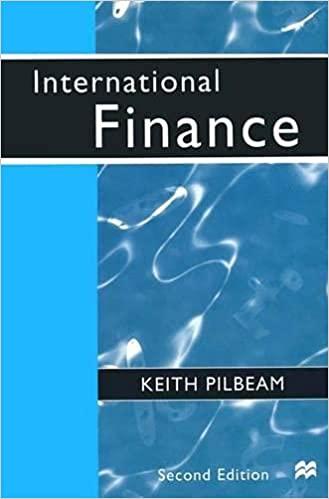Question
Consider a gas swap contract calling for the exchange of 1m3 of gas at the end of each year for a period of 3 years.
Consider a gas swap contract calling for the exchange of 1m3 of gas at the end of each year for a period of 3 years. The discount factors for maturities of 1, 2 and 3 years are 0.98, 0.92 and 0.88, respectively. Gas storage is costly; the proportional storage costs equal 3% per year with annual
3 compounding. There is no convenience yield on gas. The current spot price equals $2 per m .
-
(a) What is the swap rate for this 3-year swap?
-
(b) A swap is a financially engineered contract that combines a position in forwards with a position in bonds. What are the borrowing and lending transactions implicit in the 3-yr swap of a)? (if you could not answer question a), you may assume the swap rate equals $2.25 per m3)
-
(c) Based on the data in b), which party in the swap is more exposed to credit risk over the life of the swap, the long (i.e., purchasing the gas) or short (i.e., selling the gas)? Why?
-
(d) What condition (contango or backwardation) should the forward curve satisfy such that the long party will effectively borrow money in the early part of the swap contract?
-
(e) A callable interest rate swap gives the party that pays the fixed rate the right to cancel the swap contract without additional payments or penalties any time before the maturity of the contract. Like other swap contracts, the callable swap will be constructed so that it has zero value initially. Comparing a callable swap to an otherwise identical plain vanilla swap, for which contract will the swap rate be higher? Why?
Step by Step Solution
There are 3 Steps involved in it
Step: 1

Get Instant Access to Expert-Tailored Solutions
See step-by-step solutions with expert insights and AI powered tools for academic success
Step: 2

Step: 3

Ace Your Homework with AI
Get the answers you need in no time with our AI-driven, step-by-step assistance
Get Started


